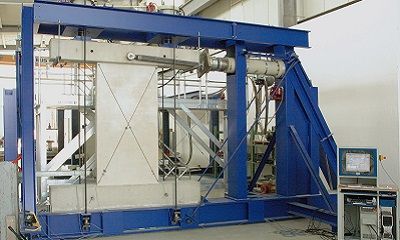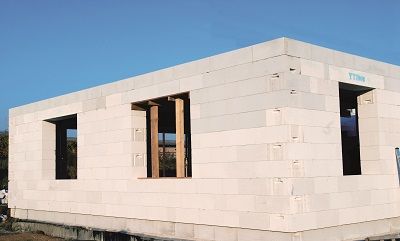Especially regions in Southern and South-Eastern Europe are repeatedly confronted with earthquakes and their consequences. In March 2020, for example, there was a strong earthquake in the Croatian capital Zagreb, in which thousands of structures were destroyed. We want to meet the increasing demand for earthquake-resistant buildings in these areas and help make the houses and thus life there safer.
AAC in earthquake zones?
Earthquake resistance is one of the greatest challenges for modern building materials. With the help of laboratory tests and simulations based on them, we are working on setting up our products for such extreme requirements.
How is earthquake resistance tested?

For more than ten years, Xella Technologie- und Forschungsgesellschaft mbH (T&F) has been continuously working on optimizing masonry systems made of autoclaved aerated concrete with regard to earthquake resistance. Within the framework of several projects, extensive tests are carried out on Ytong autoclaved aerated concrete blocks in our testing facilities for earthquake simulation at the Emstal site. Tests are carried out to assess the deformation capacity. For this purpose, the test walls are subjected to a cyclic horizontal load for several hours, simulating a seismic action. Based on the results of these tests, computer simulations are performed to evaluate the earthquake resistance of eleven different building configurations made of AAC blocks. The results of the earthquake projects will be translated into technical regulations and can then be appied in practice.
Standardized earthquake resistance

The use of masonry in earthquake zones requires special technical verification. The earthquake standard for building structures specifies resistance requirements and limits for deformations. For any new building system that does not meet the requirements of the standard, specific verification of its behavior under earthquake loading is required. Masonry systems using lightweight AAC blocks are not specifically covered by the European seismic standard, so Xella T&F worked with Italian EUCENTRE to develop an assessment document that served as the basis for issuing a European Technical Assessment (ETA). The ETA was issued by the Austrian Institute for Building Technology (OIB) and contains rules for the application of a construction kit for load-bearing masonry in regions with medium earthquake stress.
More innovation news
-
When the earth shakes... the house stands strong
In October 2024, the earth did shake in Paris. Fortunately, however, it was not a real earthquake, but a successful test of the earthquake resistance of autoclaved aerated concrete products, which was supervised by Xella colleagues.
View more -
Celebrating 20 Years of innovation and internationalization: the journey of Xella Technology and Research
This year marks the 20th anniversary of Xella Technology and Research (T&F), a milestone reflecting two decades of innovation, collaboration, and research in the fields of Autoclaved Aerated Concrete (AAC), Calcium Silicate Units (CSU), mineral insulation boards and mortar.
View more -
Designing innovative and sustainable in Serbia
As Head of Innovation in Belgrade, Edin Dalifi, is well aware of the expectations that the construction industry in Southern Europe has of Xella - and he knows how to meet them.
View more
Introduction
2025 Xella International. All rights reserved.